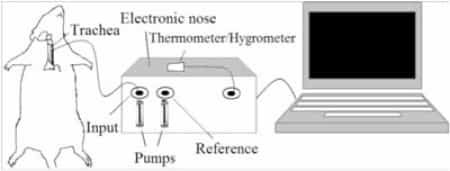More and more people suffer from high blood pressure and have diabetes problems, the blame could be attributed to the incorrect lifestyle of Western society. Over time, the same habits lead to a drastic drop in kidney function, in some cases we get to talk about chronic kidney disease, CKD (chronic renal disease) to put it in English. A part of the kidney tissue loses its functions and to compensate for the lack the remaining part of the kidney tends to increase its performance. Diagnosing CDK is relatively simple, a series of analyzes are performed which ascertain renal function, the structure of the kidney is imaged using ultrasound, structural anomalies are sought and the position of the kidney itself is studied, however, beyond the due to its invasiveness, the biopsy is the only type of investigation that leads to a certain diagnosis. According to a group of American researchers it is difficult to understand which part of the kidney is subject to dysfunction, more sophisticated and precise equipment would be needed which would allow the dysfunction to be effectively located. The same researchers have relied on nanotechnology with the intention of finding an alternative solution to the biopsy. Once again experiments were performed on laboratory mice affected by CKD, the outcome of the experiment was presented on April 29, 2009 in ACS Nano. Dr. Haick's team analyzed fluids from the trachea of mice, and it quickly became clear that the sick mice had organic substances that weren't present in healthy mice. The substances and the mice's breath were monitored and filtered through carbon microtubules. A new way of diagnosing CKD through the breath has come about. [via Nano Workshop ]
You may also like
Business Phone Subscriptions: Guide to Costs, Options and Benefits
Choosing a business phone subscription can be a complex task, with numerous factors such as costs, benefits, and options to consider. This article explores various business phone subscriptions, examining the best deals and geographic cost variations to help businesses make informed decisions.
Private Mobile Phone Subscriptions: Finding the Best Fit for Your Needs
Selecting a mobile phone subscription can be daunting with myriad plans and hidden costs. This article explores various phone plans for private use, comparing prices and highlighting key considerations to help you choose the best mobile service provider.
Green Energy and Charging Stations: Proposals and Costs
As the world shifts towards greener energy sources, the demand for electric vehicle (EV) charging stations is on the rise. This article examines the current landscape of EV charging infrastructure, comparing proposals, costs, and benefits. We delve into geographic cost variations and spotlight the most competitive charging station offers.
Analysis of Green Energy Through Photovoltaic Panels
As the world searches for sustainable solutions to combat climate change, solar energy emerges as a frontrunner. This article explores the various proposals, costs, and advantages associated with photovoltaic panels, providing a comprehensive guide to understanding and investing in solar power. It also delves into geographical cost variations and compares current market offerings for optimal decision-making.
